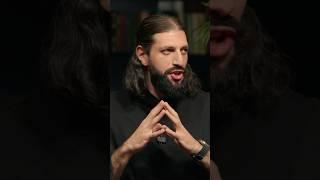
The Evolution of the Translation Studies Reader - Lawrence Venuti
Lawrence Venuti’s The Translation Studies Reader first appeared in 2000 and has been the pre-eminent English-language textbook in the discipline for over twenty years. Its fourth edition, incorporating significant changes, was published by Routledge earlier this year, so the 21st anniversary marks an appropriate point from which to survey the book’s evolution. The first edition looked back over an 80-year history of the emergence of the modern discipline of translation studies in the West, across 30 contributions. The latest version has grown to 34 contributions, only half of which remain from the first edition, and it ranges historically from the third century to the 21st, including a representative selection of Chinese translation theory. To discuss the inception and development of the Reader – why pieces were selected and deselected, how the anthology has reflected and shaped the development of the discipline – Lawrence Venuti joined BCLT’s Academic Director Duncan Large.
Lawrence Venuti, Professor Emeritus of English at Temple University in Philadelphia, is a translation theorist and historian as well as a translator from Italian, French and Catalan. He is the author of The Translator’s Invisibility: A History of Translation (3rd edn, 2018), The Scandals of Translation: Towards an Ethics of Difference (1998), Translation Changes Everything: Theory and Practice (2013) and Contra Instrumentalism: A Translation Polemic (2019), as well as the editor of Rethinking Translation: Discourse, Subjectivity, Ideology (2nd edn, 2020), The Translation Studies Reader (4th edn, 2021), and Teaching Translation: Programs, Courses, Pedagogies (2016). His recent translations include J. Rodolfo Wilcock’s collection of real and imaginary biographies, The Temple of Iconoclasts (2014), Paola Loreto’s poems, houses | stripped (2018) and J. V. Foix’s Daybook 1918: Early Fragments (2019), for which Venuti won Northwestern University’s Global Humanities Translation Prize. He has held awards and grants from such institutions as the National Endowment for the Arts, the National Endowment for the Humanities, and the Guggenheim Foundation.
Lawrence Venuti, Professor Emeritus of English at Temple University in Philadelphia, is a translation theorist and historian as well as a translator from Italian, French and Catalan. He is the author of The Translator’s Invisibility: A History of Translation (3rd edn, 2018), The Scandals of Translation: Towards an Ethics of Difference (1998), Translation Changes Everything: Theory and Practice (2013) and Contra Instrumentalism: A Translation Polemic (2019), as well as the editor of Rethinking Translation: Discourse, Subjectivity, Ideology (2nd edn, 2020), The Translation Studies Reader (4th edn, 2021), and Teaching Translation: Programs, Courses, Pedagogies (2016). His recent translations include J. Rodolfo Wilcock’s collection of real and imaginary biographies, The Temple of Iconoclasts (2014), Paola Loreto’s poems, houses | stripped (2018) and J. V. Foix’s Daybook 1918: Early Fragments (2019), for which Venuti won Northwestern University’s Global Humanities Translation Prize. He has held awards and grants from such institutions as the National Endowment for the Arts, the National Endowment for the Humanities, and the Guggenheim Foundation.
Комментарии:
The Evolution of the Translation Studies Reader - Lawrence Venuti
British Centre for Literary Translation
4 Must-Have Tools to Find and Organize Research Articles for a Literature Review
Science Grad School Coach
ПОЯСНЯЮ ЗА ХЛОРОФИТ В TERRARIA!
IGRARIUM - Игровые обзоры
MOTHRA (1962): Atomic Heat Ray (Full Clip) - Classic 1960's Movie
Turner Classic Movies
Fix Battlefield 2042 DirectX Error on Windows 11/10
HowtoFixDllExeErrors


























